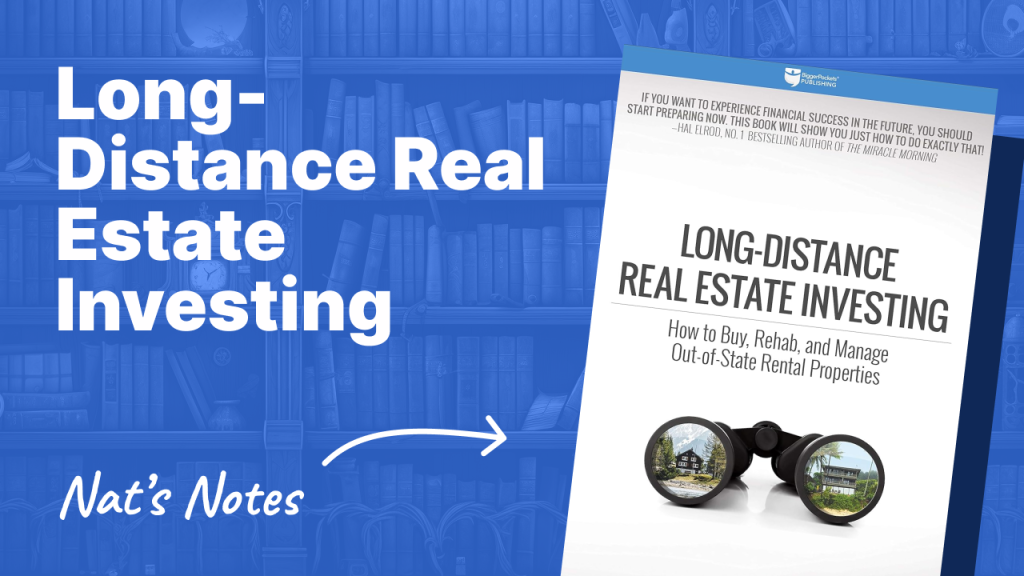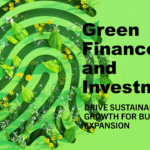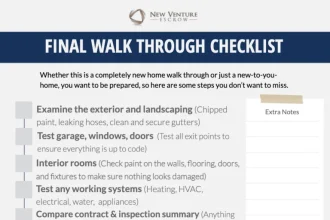Ever found yourself scrolling through Domain real estate listings, dreaming of financial freedom, only to be slapped back to reality by the sky-high prices in your own city? You live in Sydney, but the numbers only seem to work in Perth. You’re in Melbourne, but the positive cash flow opportunities are screaming from Adelaide or regional Queensland. This is the modern investor’s dilemma.
But what if your location wasn’t a limitation? What if it was your strategic advantage?
Welcome to the world of long-distance real estate investing. This isn’t just a niche strategy for the ultra-wealthy; it’s one of the most powerful ways for everyday Australians to build a diversified, high-performing property portfolio in 2024. It’s about detaching your investment decisions from your home address and surgically targeting markets based purely on data, growth potential, and returns.
This isn’t a brief overview. This is your comprehensive, step-by-step masterclass. We will dissect the entire process, from identifying a booming market thousands of kilometers away to managing a tenancy without ever setting foot in the property. We’ll cover building your team, leveraging technology, and navigating the unique challenges of the Australian real estate landscape. Let’s build your borderless empire.
Why Go Long-Distance? The Strategic Edge in the Australian Market

Before we dive into the “how,” let’s solidify the “why.” Sticking to your local market can feel safe, but it’s like fishing in a single pond—you’re limited to whatever swims by. Long-distance investing opens up the entire ocean.
1. Market Diversification: Your Shield Against Volatility
The Australian property market isn’t one single entity; it’s a collection of dozens of micro-markets, each with its own cycle. The Melbourne real estate market might be cooling while the Perth real estate market is firing on all cylinders. A downturn in the real estate Sydney market due to local economic factors might have zero impact on real estate Brisbane, which is benefiting from interstate migration.
By investing across different states—perhaps one property in real estate NSW and another in SA real estate—you spread your risk. A slowdown in one area is buffered by the performance of another, creating a more stable and resilient portfolio.
2. Access to High-Growth & High-Yield Markets
The simple truth is that the best place to live isn’t always the best place to invest. Major capital cities like Sydney and Melbourne offer strong long-term capital growth prospects but often come with punishingly low rental yields. The rent you receive might not even cover the mortgage and expenses.
Conversely, other markets might offer a golden combination:
- High Rental Yield: Cities like Adelaide, Perth, and many regional centers in real estate QLD often provide significantly higher rental returns, meaning your property can be positively geared from day one.
- High Capital Growth Potential: You can target areas with massive infrastructure spending, strong population growth, and economic diversification that are poised for a boom. The growth story in gold coast real estate over the past decade is a prime example.
3. Unlocking Affordability
Let’s be blunt: for many, buying an investment property in their own city is simply impossible. The deposit required for a median-priced house in Sydney could potentially buy you two properties outright in a different market. Long-distance investing breaks down this affordability barrier, allowing you to get into the market and start building equity sooner with a property that fits your budget. You might be searching for real estate for sale that is simply out of reach locally but well within your grasp interstate.
The Core Framework: Your 7-Step Guide to Out-of-State Success
This is the heart of the operation. Follow these steps methodically, and you’ll transform what seems like a daunting task into a repeatable, scalable system.
Step 1: Define Your Investment Goals & Financial Foundation
Before you even glance at a listing, you need a rock-solid plan.
A. Clarify Your “Why”: Cash Flow vs. Capital Growth
- Cash Flow (or Positive Gearing): Your goal is for the rental income to exceed all your expenses (mortgage, rates, insurance, management fees), leaving you with a profit each month. This is often found in more affordable or regional markets. This is ideal for investors looking to supplement their income.
- Capital Growth (or Appreciation): Your primary goal is for the property’s value to increase significantly over time. You might accept a small monthly loss (negative gearing) for the prospect of a massive long-term payoff. This is typical of high-demand capital city markets.
- A Hybrid Approach: The sweet spot for many investors is a property that has a neutral or slightly positive cash flow with strong prospects for future growth.
B. The Financial Health Check
Before a lender will even speak to you, get your finances in order. This includes:
- Credit Score: Check your credit report and clean up any errors.
- Deposit & Costs: You’ll need a minimum of a 20% deposit to avoid Lenders Mortgage Insurance (LMI), plus funds for stamp duty, legal fees, and inspection costs (budget around 5% of the purchase price for these).
- Borrowing Power: Speak to a mortgage broker to get a clear understanding of your borrowing capacity and obtain a pre-approval. This makes you a serious buyer when it’s time to make an offer.
High-CPC Tip: Engaging with mortgage brokers and financial advisors is a high-intent action. Your content should guide users towards seeking these professional services.
Step 2: Market Research & Selection – Finding Your Goldmine from Afar
This is where the magic happens. You’ll become a data-driven detective, hunting for the perfect investment location.
A. Macro-Level Analysis (The 30,000-Foot View)
First, you’re looking at states and cities. Focus on the “Big 3” drivers of property growth:
- Economy & Jobs: Is the local economy diversifying? Are major companies moving in? Look for government data on job growth and unemployment rates. A strong, varied economy means people have jobs and can afford to pay rent.
- Population Growth: Are people moving to this city or state? Check the Australian Bureau of Statistics (ABS) for interstate and overseas migration data. More people means more demand for housing.
- Infrastructure Spending: Billions of dollars being spent on new roads, rail, hospitals, and schools is a massive green light. It makes an area more desirable and creates construction jobs. Track state and federal budget announcements. A new train line can completely transform a suburb.
B. Micro-Level Analysis (The Street-Level View)
Once you’ve shortlisted a few cities (e.g., Perth, Brisbane, Adelaide), it’s time to zoom in on specific Local Government Areas (LGAs) and suburbs.
- Vacancy Rates: Look for rates consistently below 2% (ideally below 1%). This indicates strong tenant demand and upward pressure on rents. SQM Research is an excellent source for this data. [Source: SQM Research – Vacancy Rates]
- Rental Yield: Calculate the gross rental yield (Annual Rent / Purchase Price x 100). Compare yields across different suburbs to find the best returns.
- Amenities: Good schools, public transport, shopping centers, parks, and lifestyle features (cafes, beaches) are crucial for attracting quality tenants. Use Google Maps to explore suburbs virtually.
- Demographics: Who lives here? Young professionals, families, retirees? This will influence the type of property you buy (e.g., apartments near a university vs. family homes near a good school).
- Supply & Demand: Are there massive new housing estates being built? An oversupply of new properties could suppress price growth and rents. Check local council planning portals.
Live Daily Information Sources:
To stay current, you need reliable data. Don’t rely on sensationalist real estate news headlines.
- CoreLogic RP Data: The industry standard for property data, analytics, and market trends in Australia. [Source: CoreLogic Australia]
- Domain & Realestate.com.au: Their research and news sections provide excellent suburb profiles, sold history (sold real estate data), and market reports.
- State Government Planning Portals: Search for “NSW Planning Portal” or “QLD Development Applications” to see what’s being built.
- Reserve Bank of Australia (RBA): For macro-economic indicators and interest rate decisions that impact the entire market. [Source: RBA]
For example, your research might show that while the general real estate Victoria market is stable, certain pockets are outperforming. You might find a suburb in real estate cairns with a booming tourism industry and low vacancy rates, or a suburb in real estate perth benefiting from the resources sector. This granular level of detail is key.
Step 3: Assembling Your “Boots-on-the-Ground” Team
This is the single most important step for a long-distance investor. You cannot succeed without a stellar team representing your interests. They are your eyes, ears, and hands in the target market.
A. The Investment-Savvy Real Estate Agent
Do not just sign up with the first real estate agent you find. You need a buyer’s agent or a sales agent who understands and ideally practices real estate investing themselves.
- How to Find Them: Look for agents who specialize in investment properties. Ask for referrals in online investor forums (like PropertyChat). Interview at least three agents.
- Questions to Ask:
- “How many investment properties have you sold in this suburb in the last year?”
- “What are the key drivers for rental demand and capital growth here?”
- “Can you connect me with a great property manager and building inspector?”
- “Are you comfortable doing detailed video walk-throughs for me?”
A good agent from a reputable firm, whether it’s a large network like Ray White Real Estate or a respected local specialist like Turner Real Estate in Adelaide or Holdsworth Real Estate, will be an invaluable asset.
B. The All-Important Property Manager
Your property manager is not just a rent collector; they are the CEO of your investment property. A great one is worth their weight in gold; a bad one can destroy your returns.
- Start Your Search Early: Begin interviewing property managers before you even make an offer on a property. Their insights into specific streets and property types are invaluable.
- What to Look For:
- Communication: Are they responsive and proactive?
- Low Vacancy Rates: Ask for their average days-on-market for vacant properties.
- Thorough Tenant Screening: What is their process for background checks, reference checks, and affordability assessments?
- Fee Structure: Understand all fees—management fee, letting fee, marketing costs, etc.
- Technology: Do they use modern software with an owner’s portal for easy tracking of statements and maintenance?
Firms like Elders Real Estate often have strong property management arms in regional areas, while boutique firms might offer more personalized service in the cities.
C. The Diligent Building and Pest Inspector
This is non-negotiable. An independent building and pest inspection is your only defense against buying a “lemon” with hidden structural issues, termite damage, or plumbing nightmares. Your agent or property manager can recommend trusted local inspectors. Never, ever skip this step.
D. The Legal Team: Conveyancer/Solicitor
You need a legal professional who is licensed in the state where you are buying. They will handle the contract of sale, conduct title searches, and manage the settlement process.
Step 4: The Property Hunt & Due Diligence from Afar
With your team in place, the hunt begins.
A. Leveraging Technology
- Virtual Tours & Video Walk-throughs: High-quality real estate photography and 3D tours are standard now. But you need more. Ask your real estate agent to do a live video call (FaceTime/Zoom) from the property. Ask them to show you the water pressure, open and close all the windows, and zoom in on any potential defects. Ask them to walk down the street to show you the neighbours’ properties.
- Google Maps & Street View: Use Street View to “walk” the entire neighbourhood. Is it well-maintained? Are there parks nearby? What is the condition of the surrounding homes?
- Flood Maps & Council Overlays: Check local council websites for zoning information, flood maps, and any heritage or character overlays that might restrict future development. This is crucial due diligence.
B. The Numbers Don’t Lie
Your agent will send you properties. Your job is to run the numbers on every single one. Create a spreadsheet to calculate the potential cash flow.
- Income: Weekly Rent x 52
- Expenses:
- Mortgage Repayments (use a mortgage calculator)
- Council Rates (ask the agent for this)
- Water Rates
- Insurance (Landlord’s and Building)
- Property Management Fees (~7-10% of rent)
- Maintenance Buffer (budget 1-2% of the property’s value per year)
- Vacancy Buffer (budget for 2-4 weeks of vacancy per year)
Subtract total expenses from total income. Is the result positive or negative? How does it align with your goals?
Step 5: Making the Offer & Closing the Deal
Your research is done, your team is ready, and you’ve found the perfect property.
A. Crafting the Offer
Your agent will guide you on price, based on comparable sales (sold real estate data). You’ll also decide on conditions, such as “subject to finance” and “subject to a satisfactory building and pest inspection.”
B. The Digital Closing Process
Thankfully, the entire closing process can now be handled remotely. Contracts are sent and signed digitally (e.g., via DocuSign). Your conveyancer and mortgage broker will coordinate with the seller’s team and the banks to ensure everything proceeds to settlement. You don’t need to be physically present.
Step 6: The Handover – Setting Up for Passive Income
Congratulations, you’re a property owner! Now, the focus shifts to tenancy.
- Property Manager Onboarding: Immediately after settlement, your chosen property manager takes over. They will conduct an initial inspection, document the property’s condition, and recommend any minor repairs or improvements needed to attract the best tenants (e.g., a fresh coat of paint).
- Marketing & Tenant Selection: They will list the property for real estate rent, handle all inquiries and showings, and present you with a shortlist of thoroughly vetted applicants. You will typically make the final decision.
- Lease & Bond: They handle the signing of the lease agreement and lodging of the rental bond with the relevant state authority.
Step 7: Managing Your Investment from a Distance
Your role now becomes one of oversight, not active management.
- Trust But Verify: Your property manager should send you a detailed monthly statement showing all income and expenses. Review it every month.
- Set Communication Expectations: Establish a preferred method of communication with your manager. Do you want a phone call for all maintenance issues, or just for those over a certain amount (e.g., $500)?
- Build a Cash Buffer: Always maintain a separate bank account for your investment property with a cash buffer equivalent to 3-6 months of expenses. This will cover any unexpected vacancies or major repairs without causing you financial stress.
Expanding Your Horizons: Long-Distance Commercial Real Estate Investing

Once you’ve mastered residential, you might look to the world of commercial property. The principles are similar, but the stakes and complexities are higher. This is a very high-CPC area, as it involves B2B services, large loans, and sophisticated investors.
What’s Different About Commercial?
- Lease Terms: Commercial leases are much longer (often 3, 5, or 10 years) with built-in annual rent increases, providing more secure and predictable income.
- Tenant Responsibility: Tenants are often responsible for all outgoings (rates, insurance, maintenance), known as a “net lease.”
- Valuations: Commercial real estate is valued based on the income it generates (the capitalization rate or “cap rate”), not just comparable sales.
Long-Distance Challenges:
Investing in commercial real estate Perth from Sydney requires an even more specialized team. You’ll need:
- A commercial real estate agent who understands the local business landscape.
- A property manager experienced in commerce and lease negotiations.
- Lawyers who specialize in commercial leases.
The returns can be fantastic, but the due diligence on the tenant’s financial viability and the local economic conditions is even more critical.
Your Digital Toolkit: The Technology That Makes It Possible
Modern technology is the great enabler of the long-distance investor.
- Property Portals: Domain real estate, realestate.com.au, commercialrealestate.com.au.
- Data Analytics: CoreLogic, Pricefinder, SQM Research.
- Communication: Zoom, FaceTime, and Slack for keeping in touch with your team.
- Mapping: Google Maps and Google Earth for virtual neighbourhood exploration.
- Property Management Software: Modern managers use platforms like PropertyMe or Console Cloud, which give you an online portal to view statements, inspection reports, and maintenance requests 24/7. This transparency is crucial for peace of mind.
Mitigating the Inevitable Risks: What Could Go Wrong?
It would be irresponsible to paint a picture of only sunshine and rainbows. Real estate investing carries risks, and distance can amplify them if you’re not prepared.
- The Bad Tenant: A tenant who doesn’t pay rent or damages the property is a nightmare. Mitigation: A brilliant property manager with a bulletproof screening process and comprehensive landlord insurance.
- The Underperforming Property Manager: They become unresponsive, fail to conduct routine inspections, or place bad tenants. Mitigation: The thorough interview process we discussed, checking their references, and not being afraid to switch managers if they don’t perform.
- Surprise Major Repairs: A burst hot water system or a leaking roof can happen anytime. Mitigation: A quality building inspection before purchase and a healthy cash buffer set aside specifically for capital expenditures.
- Market Downturns: The market you invest in could stagnate or decline. Mitigation: In-depth initial research focusing on long-term economic and demographic fundamentals, not just chasing short-term “hotspots.” Diversification across multiple markets also helps. A property that is cash-flow positive can weather a downturn far more easily than a negatively geared one.
Conclusion: Your Journey to Becoming a Borderless Investor
Long-distance real estate investing is not a “get rich quick” scheme. It’s a strategic, system-driven business. It requires more upfront research and a greater reliance on a professional team than buying in your own backyard.
But the rewards are immense.
You break free from the limitations of your local market. You gain the ability to hunt for yield, chase growth, and build a truly diversified and resilient portfolio that works for you, 24/7, no matter where you are. From the bustling streets of real estate Sydney to the coastal charm of real estate Margaret River, from the opportunities in real estate Kiama to the potential in Halls Head Real Estate, the entire Australian continent becomes your hunting ground.
By following this guide, leveraging technology, and building an A-grade team, you can confidently and successfully invest anywhere. The age of the borderless investor is here.











